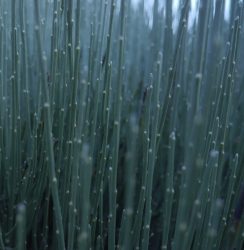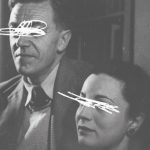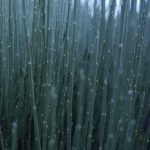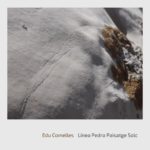EDU COMELLES – STILL LIFE 
Edu Comelles is a sound and media artist working from Barcelona, Spain. He is not only a performing musician but works in a wide variety of contexts: new media, sound art, musical production, sound design, installations, as well as curating the Audiotalaia netlabel “dedicated to research, teach and produce experimental music and sound art.”
“Still Life is an album about the nature of field recordings and their power to become instruments by itself.”
Comelles meticulously redesigns and reorders the different sound sources he took to create every track: samples for a small wood kalimba, cello samples, field recordings of a fence being blown by the wind, samples of an early recording of a cathedral organ, rehearsals by a baroque music ensemble, a recording of Portuguese singer Felica Mar, and the voice of Isabel Latorre.
As different as the origin of all these sources may be, Edu Comelles manages to create a beautifully coherent album and demonstrates that sound art does nót necessarily be difficult to listen to. On the contrary: this is definitely one of the most beautiful – and yet adventurous – albums I recently came across.
Still Life is released on the Fluid Audio label, which is good ánd sad news.
Good, because the packaging of physical releases on this label (in this case: 3 ‘finger-printed’ CDR’s) are stunning works of devotion to the art.
Sad, because these releases are always sold out on pre-release immediately. (At time of writing only a few copies are still available from Norman Records).
Luckily, Still Life is also available in a digital download version via the Fluid Audio digital sublabel Facture.
RAFA RAMOS SANIA & EDU COMELLES – BOTÁNICA DE BALCÓN 
Compared to Still Life mentioned above, Botánica de Balcón has quite a different atmosphere. Somewhat less exuberant in the sound design experiments, perhaps, because in this collaboration Edu Comelles (electronics and field recordings) and Rafa Ramos Sania (double bass, acoustic guitar, oud) use strings, wood and minimal electronics to build their sonic textures.
I don’t mean to say that this album is less adventurous, because that would be misunderstanding it. It is just created from a different starting point and so expresses a slightly different proposition.
“The aim is to submerge form that starting premise into sonic territories closer to New Classic, a certain experimental folk and the shredded expressiveness of the double bass, comfortably sitting on eastern tonalities and subtle winks or the Japanese Shakuhachi.”
Ramos Sania’s use of the double bass is not unlike the sound of a cello – it has the same emotional impact, though somewhat darker than usual. Botánica de Balcón presents rather introspective ‘neo-classical’ music – but with a refreshing ‘twist’: Comelles – seemingly taking on a more supporting role here – colors the string sounds with his subtle electronics while at the same time defining the unique position of this enchanting music.
EDU COMELLES – LÍNIA PEDRA / PAISATGE SOLG
Last but not least, Whitelabrecs recently released a new Edu Comelles solo album featuring two pieces, each around 16 minutes long.
Línia, Pedra, Paisatge and Solg are Catalan words for line, stone, landscape and groove – the two compositions are based on the skyline “that can be seen from the top of the ruins of the castle of Culla, a small village inland of the Castéllo province (Eastern Spain)”.
The first part, Línia / Pedra describes the skyline between the northeast and southwest. Paisatge / Solg focuses on the skyline between the southwest and northeast.
Comelles only used his voice and sound sources that were recorded on this location, the only exception being the double bass that was overdubbed later.
It would be interesting to see hów exactly the music follows the skyline (and back), but unless you know the location you’ll have to use your imagination and just follow the music. Which is not very hard, because it is easy to just ‘go with the flow’ here.
For an impression of the landscape this photo on Flickr may help somewhat – although I do not know if this is the same northeast/southwest skyline Comelles describes with his music.
Seeing these hills around Culls dóes explain why the music slowly rises and then lowers again. It starts with a long intro of vocal drones, that gradually merge with other found sounds, increasing the intensity (somewhat) when needed and receding slowly into voices again on the way back.





